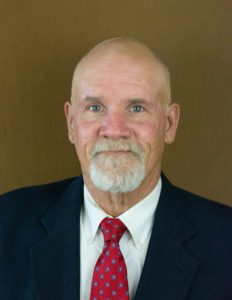In view of recent events of snow-mageddon that we all recently experienced in Texas, there arises the issue of being continually prepared. Any safety person worth their weight should play the “what if” game continually, as should anyone in any other position in the petroleum gas industry. When it comes to operations, safety, accounting, investments, or what-have-you, leaders always have one thing in common: the ability to anticipate, adapt, and overcome. As stated in a previous article, our industry relies on these values of assessing risk. Risk is always an ingredient in any busines. The ability to anticipate, control, and mitigate the risk is key.
Even in the Boy Scouts of America, a key motto was to “Be Prepared.” This sounds simple on paper. One of my favorite sayings is “Proper planning prevents poor performance.”
The Safety department can help in this endeavor. Much to the chagrin of our profession of safety, we have the reputation of always being negative, accentuating what can go wrong. The reason being this is true, is because we are trained to look critically at any task, analyze and quantify risks involved not only by historical events but current and future events including potential hazards. We are trained in critical thinking and residual risk reduction, generally speaking.
The reason for this topic this month is because there were not many in the state of Texas that were adequately prepared for the weather that befell our state, pretty much straight across the board, from the top down. When the power infrastructure started failing, ERCOT could see that we were in trouble even right before the storm hit. The state government was unaware of the issues before us. In the 68 years that I have lived in Texas, I too have not seen such a phenomenon as this.
Without going into the armchair quarterback position, I was amazed at the rudimentary situations that professionals and the general population were caught in. Most safety professionals are prepared for any situation that arises in the workplace. Some have contingency plans for back up contingency plans. When going to a remote location the process usually covers, where is the location, how much gas is needed, are there enough fluids to hydrate should workers be out for longer than expected, and are there enough safety supplies to adequately handle any emergency needs. All of this is at the minimum expectation. I have had my truck loaded with flares, first aid kits, medication, fire extinguishers, all types of PPE, ropes, chains, extra food, TP, rain coats, rubber boots, etc. Overkill? Perhaps. I rarely got caught without anything I have needed in the field.
Any required traveling I check weather reports, road conditions, availability of phone reception, and local emergency contacts (which is a requirement anyway), and I consider any other situation that might arise while out in the field. If I am traveling alone or working alone, I also fill out a Lone Worker form and disperse to two separate people.
After the storm hit the area that is specifically West Texas, I was amazed that people had no contingency plans for such an event or any other catastrophic event. I would venture to say that more people are prepared now, better than they were before the snowmagedden. It is also amazing how COVID-19 dropped off the emergency list of survival, for one week. Then the news media attacked Texas for not having a contingency plan in place.
The whole event was a gut check for the general population. The younger generation did not fare well at all. The boomers were quasi prepared. The greatest generation were panicking the least.
So in my effort to be Captain Obvious, there are positive take-aways. In any situation there are primary principles in play. Our military are the consummate professionals in this area. Here are the keys to survival:
- Have a plan and a back-up plan.
- Always have water, a source for water, and food.
- Communications—phones, radios, smoke signals, whatever it takes.
- Reliable transportation, fuel, good tires, water, oil, maintenance. If you’ve ever worked overseas in the desert, they carry an extra spare tire. The locations are so remote, that the only measure they can rely on is an old tire. Once the tire is set on fire, it makes for an easily detectable stress signal and can be seen for miles for large periods of time.
- Heat, lightning, storms, tornadoes, fires, sand storms(haboobs), and summer related phenomena such as hurricane, floods, etc., can also cause energy failures and life threatening catastrophic events to which we can be susceptible in Texas.
- Last but not least, I am not suggesting that everyone go and become survival training certified or be as qualified as a SEAL team member or become Green Beret trained. But there were numerous fatalities and situations that arose that could have been avoided or prevented.
According to the latest statistics thus far, there were 69 deaths, 44 hours of continuous freezing, and $18 billion in damage in one week. There were also 159 of 254 counties with affected public water systems. There was a 187 percent increase in fires during the week of the winter storms.
Do you think we were adequately prepare? Can we always be totally prepared? Of course not. Can we be better prepared? Absolutely.
Regardless of whether you are a large or small company, or whether you bear responsibility in a city, a metroplex, or a rural community, there is always an opportunity to improve preparedness; or we can leave it in the hands of the government.
Remember it is not how many hits we have, it is how many times we reach home safely.
_____________________________________________________________________________________________________
Dusty Roach is a safety professional based in Midland. He is also a public speaker on subjects of leadership and safety, and he maintains a personal website at dustyroach.com.











